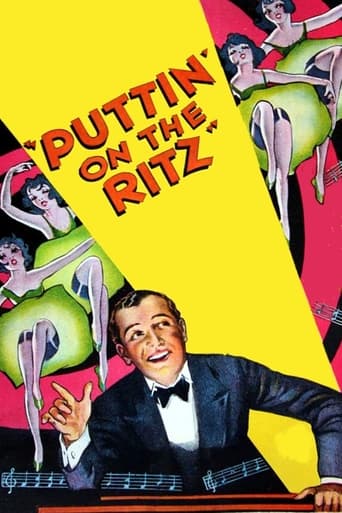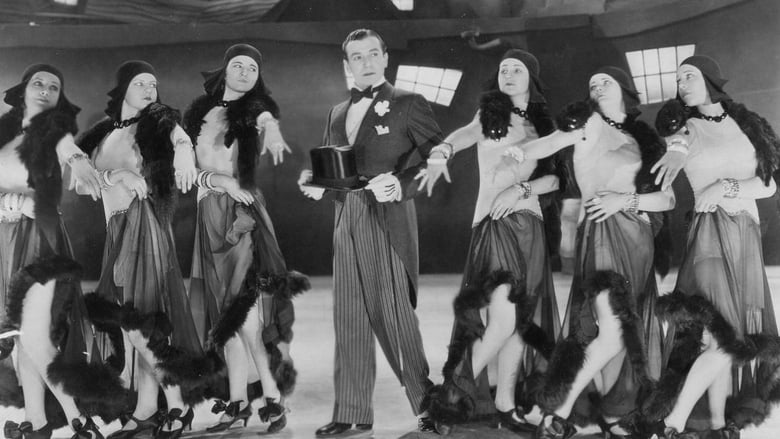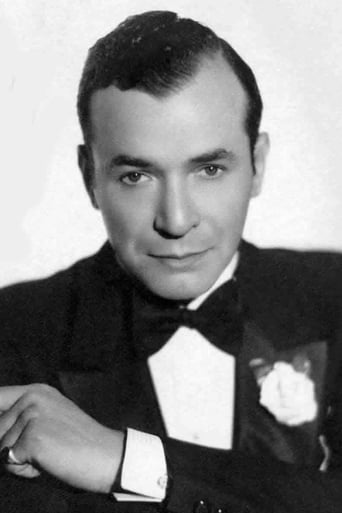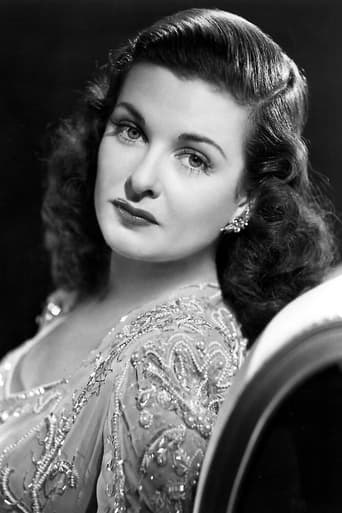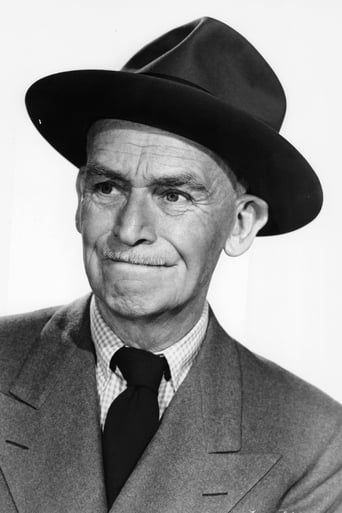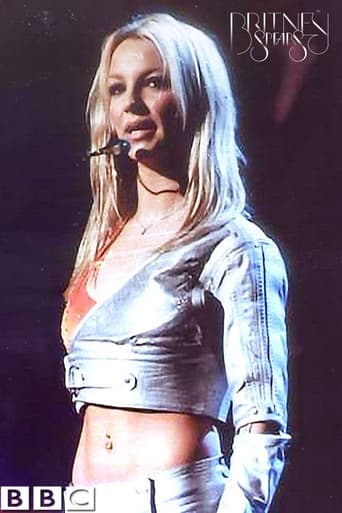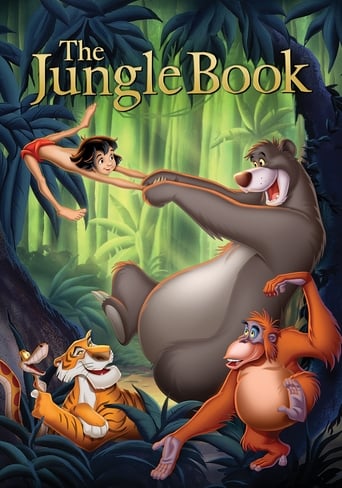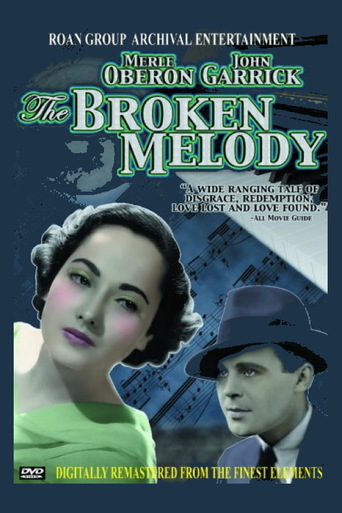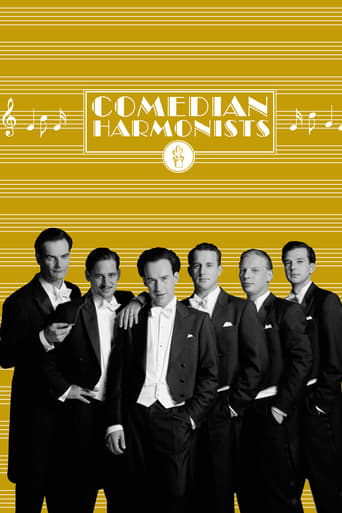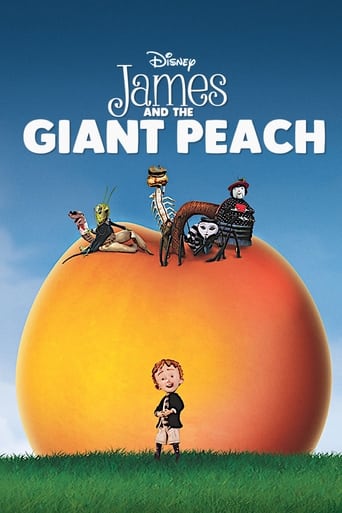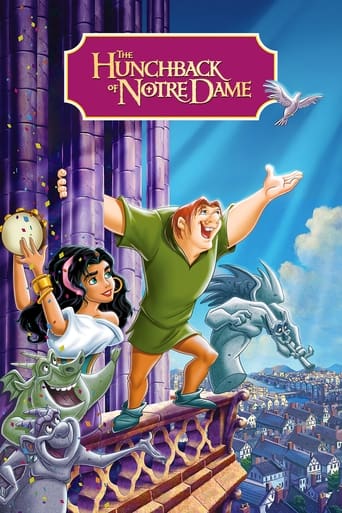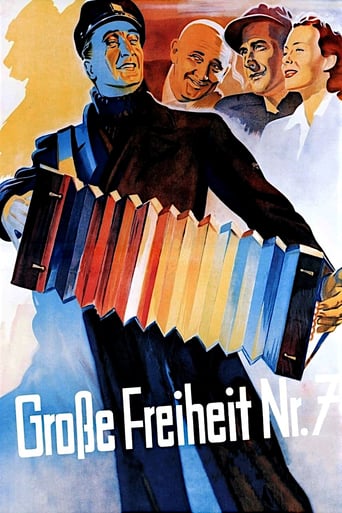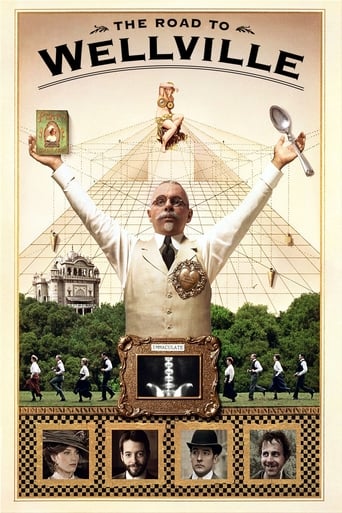Puttin' on the Ritz (1930)
A vaudeville and nightclub performer becomes successful and forgets who his friends really are.
Watch Trailer
Free Trial Channels
Cast


Similar titles
Reviews
Tied for the best movie I have ever seen
It's no definitive masterpiece but it's damn close.
Bad Acting and worse Bad Screenplay
Great movie. Not sure what people expected but I found it highly entertaining.
For an early talkie musical, this one is actually pretty memorable even if it creaks as loudly as the stairs of "The Cat and the Canary". Crooner Harry Richman is a singer with a personality and ego as big as Jolson's and Joan Bennett is the young singer he falls in love with. If the story isn't close to Jolson's real-life with dancer Ruby Keeler, then I don't know what is. James Gleason is his hard-boiled but good hearted manager and offers some much needed humor. What is impressive here are the big musical numbers, very similar to those of MGM's big budget smash "Broadway Melody" the same year (when it won an Academy Award for Best Picture), the standouts being the title song (sung here on screen for the first time before Clark Gable, Fred Astaire and Dr. Frankenstein and his monster laid into it) and the "Alice in Wonderland" spoof which almost seems like a live-action cartoon. Richman's personality may not appeal to modern audiences, but at one time, he was as big as Jolson. This is a difficult film to rate as a majority of the print is missing and what remains is choppy at best. Still a curiosity for movie musical buffs, it is worth a look for an era of film long gone. The Jolson/Keeler story was also "fictionally" dramatized in 1933's "Broadway Through a Keyhole", another lavish musical influenced more by the release of "42nd Street" in which Keeler went out a youngster but came back a star.
...but remember that the day was a short one. Harry Richman - starring almost as himself as a crooner whose head grows with his fame - was going through a short period of notoriety as a playboy, not to mention he was a popular singer in his own right with his own club at the time this film was released. Joan Bennett as Delores, Harry's love interest, was still a teenager, just getting restarted in a career that would ultimately span half a century. Then there is James Gleason as Jimmy, who actually wrote the dialogue for this one as well as acting in a supporting role as a love interest to ... Lilyan Tashman??? There's about 15 minutes missing from what's left of this film and I sure hope it's found someday and turns out to be scenes between Tashman and Gleason... Oh the possibilities! Tashman was well known at the time, but Gleason was just getting started in front of the camera with sound giving him a golden opportunity as a character actor and as a character in general.What makes this one interesting has little to do with plot, or acting or even music, in spite of the fact that the songs were written by Irving Berlin. Instead what is breathtaking is the art design. Made just after the stock market crash and before the Depression took hold, it is an art deco lover's dream. If F.W. Murnau had been making a musical in 1929 it would have looked like this.Of course, this one will always be remembered for just one number - the title one, "Puttin on the Ritz". Sure it's clumsily choreographed, but the nightmarish scene of buildings and billboards coming to life and swaying to the beat of Berlin's syncopated tune decades before any CGI could add to the spectacle is not to be forgotten.Then there are more than a few riddles today for which we have no answers. Why, when Goldie and Jimmy visit at Harry's Christmas party full of society swells are they wearing matching fur hats and plaid coats? Are they married, if so when did they get married? Why is Delores such a big hit in her own show at the end of the film when all she does is skip and wrinkle her nose with delight during a number about Alice in Wonderland while the chorus does all of the actual singing and dancing? Why would anyone ever believe that the incredibly talented Joan Bennett was a viable singer in the first place? Harry Richman's character is Harry Raymond, yet the neon sign on his club is shown as "Club Richmond". Did they change his character's name and not bother to re-shoot this probably expensive shot of the exterior of the club thinking nobody would notice? Again, if only we could find the missing 15 minutes of this film, maybe some of these questions could be answered. Watch this one for its cast at strategic points in their careers, for the title number, for the spectacular art design, and for an object lesson in the host of problems that plagued so many back-stagers such as this at the dawn of sound.
"Puttin' on the Ritz" (United Artists, 1930), directed by Edward Sloman, marks the movie debut of then popular night club entertainer Harry Richman (1895-1972). He plays Harry Raymond, a song promoter working at Wagner Music Publishers. After he meets Dolores Fenton (Joan Bennett), the two team up and rise to fame with their signature number, "With You." With the passing of time, Harry opens his own night club and becomes the singing sensation. Success eventually goes to Harry's head, causing him to shun his old friends in favor of being in with the society swells, causing Dolores to walk out on him for being so conceited. During a drunken frenzy at a party, Henry drinks some bad liquor which causes his blindness. The society crowd bid him farewell while his closest friend, Jimmy (James Gleason), sticks by him. However, as a favor to Harry, Jimmy is sworn not to tell Dolores of his unfortunate circumstance. What happens before the final fadeout will be up to the viewer to find out. Musical drama with music and lyrics by Irving Berlin include such tunes, mostly sung by Richman, as: "I'll Get By" (by Roy Turk and Fred Ahlert); "With You," "I'll Get By" (reprise); "Singing a Vagabond Song" (by Sam Messenheimer and Val Burton); "With You" (reprise); "Puttin' on the Ritz," "There's Danger in Your Eye, Cherie" (by Harry Richman and Jack Meskill); "Puttin' on the Ritz" (reprise); "Singing a Vagabond Song" (reprise); "Alice in Wonderland" (performed by Joan Bennett, sung by unknown and unseen vocalist); and "With You" (reprise/finale).Although the opening credits list production number "Alice in Wonderland" to be presented in Technicolor, it exists today only in black and white. Originally released in theaters at 88 minutes, current TV prints, which can be seen occasionally on American Movie Classics, run 69 minutes, which explains not only why the story plays so fast, but the sudden appearance of Goldie Devere (Lilyan Tashman) with the three central characters (Richman, Bennett and Gleason) after they are seen leaving Wagner Publishers as a threesome and entering a theater in the rain as a foursome in the very next scene. Tashman's character in the plot development phase and some other dialogue scenes are possibly part of the now missing 20 minutes of footage. But as what I can figure out, Goldie is Dolores's roommate who later becomes Jimmy's partner and wife. Early talkie musical with lavish sets is occasionally entertaining, somewhat better than some of Hollywood's other primitive musicals at the time, but it really comes to life during the musical interludes. The production number, "Puttin' on the Ritz" plays loud and fast, but the choreography, compliments of Maurice L. Kusell, is really no threat to Busby Berkeley. Harry Richman, whose movie career was all too brief, is an adequate singer with a style all his own, but sometimes gives the impression to be too full of himself, and while Joan Bennett isn't a great singer, this cute blonde manages to get by as long as she has Harry.Also in the supporting cast are Aileen Pringle, Purnell B. Pratt and Richard Tucker. "Puttin' on the Ritz" is worth a look mainly for those curious about the movie in itself or those who are entertained in watching primitive "talkie" musicals decades before lavish Technicolor and stereophonic sound set in. One final note: Listen to the lyrics to the title song, and compare it with the lyrics sung by Fred Astaire 16 years later in "Blue Skies" (Paramount, 1946). Same score but different wording. (***)
Since _Movie Mirror_ did a fine job of outlining the movie, I won't go into the plot too much. But there are some odd bits I'd like to comment on:Everything seems to happen quickly in this movie, with the characters' lives changing every few scenes. Harry and Dolores get engaged to each other almost immediately. Harry instantly becomes a star, and wastes no time in starting up his own restaurant/club. Then, before you know it, he goes blind from some bad whisky. Ahh, to be amongst the beautiful people...The stage sets in the bigger production numbers are beautiful, especially during the title song, where the backdrop of bobbing buildings is quite surreal. Just imagine what it would have been like, to be in the audience at that moment.Overall, it's fairly easy to tell that this is an early talkie movie. The actress playing Dolores occasionally looks like she's acting in silent pictures. The shallow plot is strung out by a bad case of "excessive musical number-itis". And Harry's voice becomes increasingly difficult to tolerate/take seriously. But it's a good time, and an interesting point in the history of cinema.

